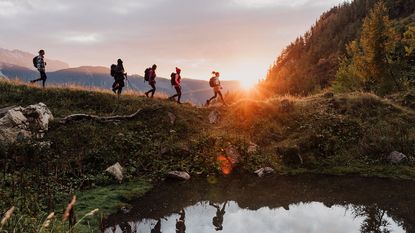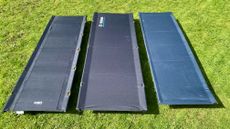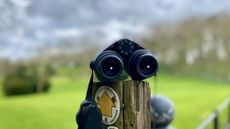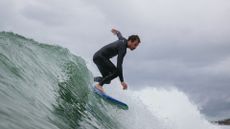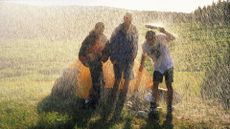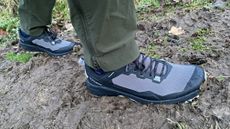Hiking is one of life's great free activities. That is, until you find yourself in your local outdoors shop racking up a massive bill for all the equipment you may or may not need. Figuring out exactly what to wear on your hike, and from there, the things you need to invest a bit more on, and where you can afford to pick a cheap or non-specialist option, is key.
As a Trainee Mountain Leader, DofE Supervisor, and Jack Wolfskin ambassador (you can see her above in the red bobble hat on a Jack Wolfskin Wolftrail excursion), Marie is a font of knowledge when it comes to outdoors kit and equipment.
"It’s about being strategic with where you invest in kit," she tells T3. "Something I mention to people when they’re just starting or trying if it’s for them, is a few bits of kit that they can perhaps go a bit cheaper/more basic to start with. And then over time they can invest!"
Read on for Marie's invaluable hiking kit buying advice to ensure a comfortable hiking trip without breaking the bank.
1. Use gym kit for base layers
While a good base layer is important, you probably have something in your gym bag that'll do the trick to start with – Marie often uses her gym and running clothing for treks. If you don't have that, there are also plenty of affordable, basic base layers around. "Just make sure they aren’t cotton and wick away your sweat," says Marie. "The idea being that you want the moisture to escape so that you are dry if for example you sweat going up a hill then cool down when you reach the top."
2. Consider renting pricier items
More and more brands now offer the option to rent, rather than buy, certain items of kit. That's a great option if you just need something for one specific trip, or are still seeing if something is for you.
"Some brands or outdoor shops now provide options to hire items for specific time period," says Marie. It really comes into its own for occasional items like sleeping bags, she says (the best lightweight sleeping bags can be seriously pricey, and you might only need it once or twice), but setups like Rab's rental scheme let you borrow general hiking clothing and down jackets too.
3. Don't bother with technical beanies and gloves
As with base layers, while you can get plenty of pricey, outdoors-specific gloves and hats, there are also lots of cheap options around that will be fine too, says Marie. "Again, over time you will probably work out what works best for you and when you need more technical items," she explains. "But there are a lot of more cost effective options for these out there that do the job."
4. Spend more on good footwear
Poor footwear can quickly ruin an excursion, so this is somewhere to invest a bit more. When choosing your boots, test them out thoroughly and prioritise comfort.
"Ill-fitting boots and shoes will make or break your trek," says Marie. "Go to a reputable shop with staff who are outdoorsy people and tell them what it is you will be doing. Ideally you will try a few pairs of shoes and some shops also have a small ramp to allow you to try walking up and down an incline. You should be getting a pair of boots / shoes that have some toe room so that your toes don’t bash the end on a downhill and get black toenails. Usually you may go up 0.5 to 1 size up to allow for this depending on the make."
Check out T3's best hiking boots for men, best hiking boots for women, or, for lighter walks, we also have recommendations for walking shoes for men and walking shoes for women.
5. Use a dry bag as a pillow
Finally, a quick hack for multi-day trips. When you're on a longer excursion, you can get creative with what you've packed. "Dry bags double up as a useful pillow if you stuff it with your clothes!" says Marie.
